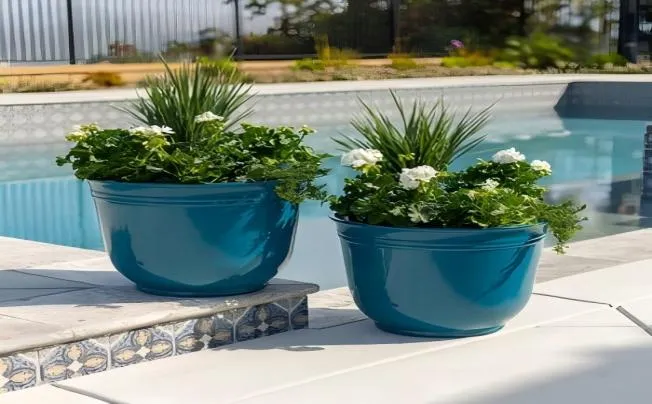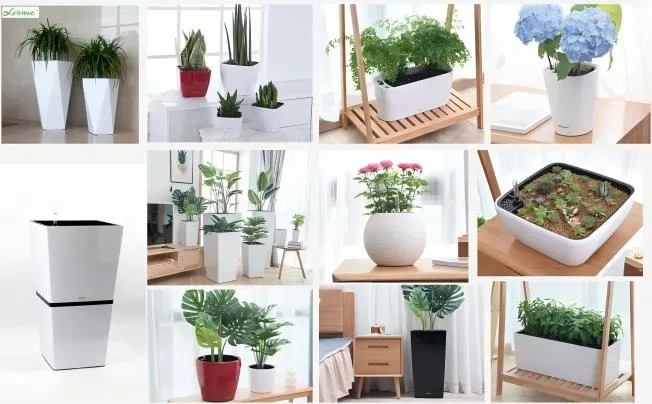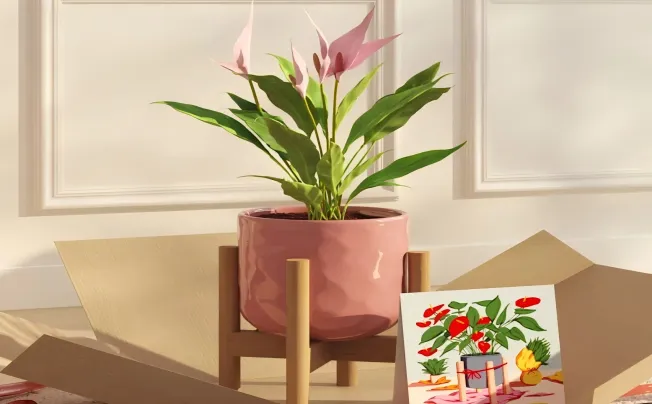How Long Do Steel Planters Last?
How long does a steel planting box last? This has an impact on the garden and landscape's long-term aesthetics and usefulness in addition to our return on investment.
Factors affecting the life of steel planting boxes
Properties of the material
Carbon steel and stainless steel are the most widely available steels. With a carbon content ranging from 0.05% to 2.0%, carbon steel is primarily made of iron and carbon. It is widely utilised in the production of many different goods because of its high strength, superior thermal stability, outstanding processing performance, and reasonably affordable cost. However, in a humid atmosphere, carbon steel is more likely to rust. In addition to degrading the planting box's aesthetics, rust progressively reduces its structural integrity and shortens its lifespan.
At least 10.5% chromium is added to carbon steel to create stainless steel; certain alloys additionally include nickel and molybdenum. A thick layer of passivation is created on the steel's surface by the reaction of chromium and oxygen. In order to keep the steel from oxidising and corroding and to preserve its original performance in a range of situations with good toughness and strength, this protective layer can effectively keep oxygen and water from coming into touch with the internal iron elements. The lifespan of steel planting boxes in various settings is determined by the characteristics of the materials used. The real-world use scenario must be taken into consideration while making a decision.
Production procedure
The planting box's structural stability is directly impacted by the quality of the welding. When exposed to external forces or climatic conditions, weak spots like cold welding, porosity, and slag inclusions during the welding process are more likely to crack, causing structural damage to the entire planting box. To guarantee that the connection between the different parts of the planting box is sturdy and dependable over time, a good welding procedure necessitates that the welding parameters (such as welding current, voltage, speed, etc.) be set sensibly and that the strength of the welded joint reach or even surpass the strength of the parent material.
The shaping process is also very important. Bending and stamping are two common shaping techniques. With great production efficiency, stamping can quickly form steel under the operation of the mould while guaranteeing product consistency and dimensional correctness. The planting box's side panels, which were created via stamping, are smooth and free of visible creases or distortion. In addition to being aesthetically pleasing, this can equally distribute tension under soil pressure and plant weight, minimising harm from localised stress concentration. Certain parts with more intricate shapes can be bent.

Utilise the surroundings
The lifespan of steel planter boxes is significantly impacted by the climate. Steel's chemical reaction rate is enhanced in high temperature conditions, which speeds up the metal's oxidation and corrosion process. The oxide layer on steel's surface is more prone to dissolve at higher temperatures, which facilitates the interior iron components' reaction with atmospheric oxygen and water and speeds up rusting.
An atmosphere with high humidity is likewise detrimental to steel planter boxes. One of the main elements influencing steel corrosion is humidity. High environmental relative humidity makes it simple for moisture to condense onto steel's surface and create a thin water layer, which serves as the required medium for electrochemical reactions and exacerbates electrochemical corrosion. Steel may develop a water film on its surface when the relative humidity rises beyond 50%, which could accelerate electrochemical reactions. For every 10% increase in relative humidity, the rate of corrosion could double.
Steel planter boxes may potentially sustain deterioration in extremely cold temperatures. Steel will lose its hardness and become more brittle in low-temperature conditions. This indicates that when steel is subjected to external forces, it is more prone to break.
Location of placement
Indoor steel planter boxes are comparatively less susceptible to environmental deterioration. Its service life is typically longer than that of outdoor planting boxes because indoor temperature and humidity are more consistent and are not impacted by environmental elements like direct sunshine and rain erosion. The likelihood of steel planting boxes rusting is significantly decreased in an indoor environment that is dry and well-ventilated.
Outdoor planting boxes are subject to more complicated environmental factors. Direct sunlight may raise the planting box's surface temperature and hasten the material's ageing process; rain erosion may remove the surface's protective layer, exposing the steel to a humid environment and hastening corrosion.
The corrosion process will be made worse by the salt in the sea breeze if the planting box is situated close to the water. Furthermore, the planting box in direct sunshine has a wide range of surface temperatures, and the material will experience internal stress due to thermal expansion and contraction. Long-term buildup will quickly result in the material splitting or deforming. On the other hand, planting boxes that are positioned in a protected area, like beneath eaves or beneath trees, will last longer because they will be less damaged by rain and sunlight.
Daily upkeep
Cleaning can stop dirt, dust, and debris from building up on the planting box's surface. These materials may absorb moisture and create electrolyte solutions, which would hasten the steel's deterioration. Timely cleaning of dirt and surface oxides can successfully stop additional corrosion in metal planting boxes. To prevent harming the protective layer on the planting box's surface, use gentle cleaning agents and delicate cloths instead than harsh brushes or extremely corrosive detergents.
Another crucial component is anti-rust treatment. The planting box's surface can be routinely treated with anti-rust paint, anti-rust oil, and other protective materials. The goal of rust prevention can be accomplished by these protective chemicals by creating a protective coating on the steel's surface that keeps water and oxygen from coming into contact with it. Rust removal should be done promptly for areas that have already started to look a little corroded. After removing the rust with wire brushes, sandpaper, and other instruments, rust inhibitors can be applied. Repainting can be required if the rust is more severe.
Checking the planting box's structural integrity on a regular basis is also crucial. Verify if any of the planting box's components are loose, distorted, cracked, etc., and promptly identify and fix any possible issues to successfully prevent significant failures. If any welding cracks are discovered, they should be fixed right away; if the planting box's side or bottom panels are discovered to be distorted, they should be replaced or adjusted as soon as possible.

How to extend the life of steel planting boxes?
Making the right choice
The material and dimensions of a steel planting box should be chosen based on the intended use and the real environment. The kinds and numbers of plants to be planted should be taken into account while creating the requirements.
Use that is reasonable
Avoid being overweight when utilising a steel planting box. The weight should be appropriately managed when filling the soil and planting plants in accordance with the planting box's dimensions and composition. Meanwhile, it's important to keep sharp things from scratching the planting box's surface. Additionally, take care to prevent chemical erosion. Steer clear of the planting box's surface when using these chemicals. They should be promptly cleaned with clean water if they are inadvertently touched.
Efficient upkeep
To get rid of dust, grime, and debris, you can occasionally rinse the planting box's surface with clean water. You can use a light detergent for stubborn stains, but stay away from detergents with acidic or alkaline elements since these can corrode the planting box's surface. To avoid moisture residue, use a fresh cloth to wipe dry after washing.
To provide a protective coating, you can first paint the planting box's surface with anti-rust paint before using it. Check the anti-rust paint's condition frequently while it's being used, like once a year or every two years. Reapply it as soon as possible if it has worn off or peeled off. A high-quality anti-rust paint can offer superior protection.
The planter box should be fixed as soon as possible if damage is discovered.

Selected Blogs
-
What customization services are available for metalworking customization?
2024-12-12
-
What Is The Difference Between A Plant Container And A Raised Bed?
2024-04-23
-
Garden Screening & Fence Panels
2024-04-23
-
Gardening pot selection tips
2024-04-17
-
The function and collocation of horticultural fire pot
2024-04-17


